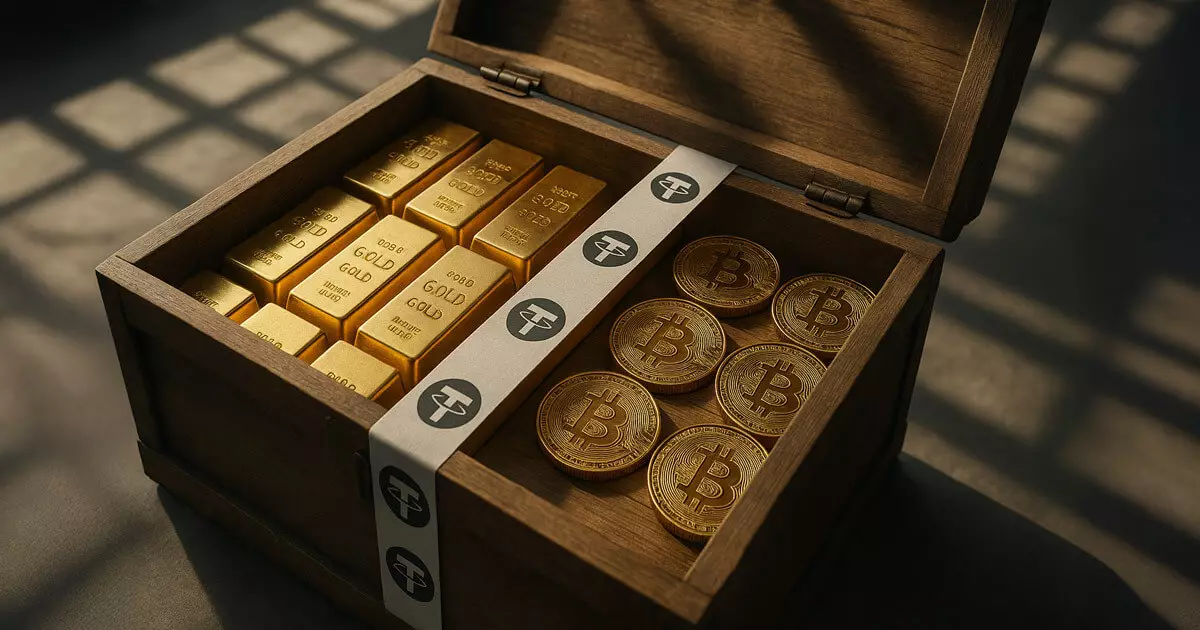In a landscape dominated by digital currencies, Tether’s recent revelation about holding approximately $8 billion worth of gold in a Swiss vault challenges conventional notions of stability in the crypto world. Tether’s CEO, Paolo Ardoino, portrays this strategic shift as an innovative step—an attempt to anchor stablecoins with tangible assets. But behind this bold claim lies a complex debate: does adding substantial physical gold reserves truly fortify Tether’s financial health, or does it expose the company to unnecessary risks and regulatory hurdles? While many see reserve diversification as prudent, the reality is that this move inserts precious metals into a highly volatile and heavily scrutinized sector, potentially complicating Tether’s ability to maintain liquidity during turbulent times.
Regulatory Crossroads and the Threat of Liquidity Constraints
The push for transparency through regulation has often been perceived as a necessary evil within the crypto industry. However, recent legislative proposals like the US GENIUS Act and Europe’s MiCA framework reveal a fundamental bias—favoring cash and near-cash assets over commodities such as gold. These laws aim to limit the use of physical assets for collateral, possibly forcing crypto firms like Tether to liquidate their bullion holdings to comply. Such regulations could inadvertently undermine the stability providers’ strategic advantage—namely, owning sizable, self-custodied gold. Tether’s current holdings, which amount to a fraction of the large ETFs’ physical gold, might seem insignificant to some, but in a crisis, that relatively modest reserve could be stretched thin, threatening USDT’s liquidity and market confidence.
Strategic Advantages and Political Challenges
Tether’s positioning as a potentially more resilient stablecoin by including physical gold is, arguably, a savvy move—especially amid a rising global appetite for gold as a safe haven. Ardoino emphasizes that owning the gold outright allows for lower costs compared to using commercial vaults, which charge fees around 0.5%. This cost-saving measure could enable Tether to scale its gold-backed offerings more efficiently, appealing to investors wary of fiat currency devaluation and banking instability. Yet, from a political standpoint, the regulatory environment appears hostile. Many policymakers appear intent on cementing fiat-backed assets as the only credible collateral, elevating the risk that Tether’s gold reserves might become a regulatory liability rather than an asset. Such an environment puts Tether in a precarious position: balancing the appeal of tangible backing with the threat of regulatory bans that could force liquidation or severely restrict operations.
The Future of Gold-Backed Cryptocurrencies in a Divided World
Despite regulatory uncertainties, the global macroeconomic context favors gold as a haven. Ardoino notes that all BRICS countries are increasing their gold reserves, signaling a potential shift towards safer assets amidst inflation fears and geopolitical tensions. This creates a paradox: while the corridors of regulation tighten, investor interests may incline toward assets like gold that offer tangible security. Tether’s strategy to combine traditional bullion economics with blockchain settlement—via its gold-backed token, XAUT—may position it uniquely in this landscape. However, the real challenge remains in convincing regulators and investors alike that such a model is not only feasible but essential for the evolution of stablecoins.
While Tether’s gold reserves reflect a bold gamble for legitimacy and resilience, they also expose vulnerabilities rooted in external political forces. Moving forward, the firm’s ability to navigate these turbulent regulatory waters while convincing the market of its commitment to stability will determine whether this gold-backed vision becomes a lasting legacy or just a fleeting experiment in a rapidly changing financial ecosystem.



















Leave a Reply